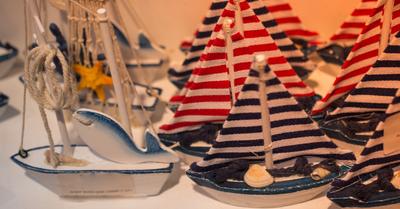Importance of a Hull
If you've ever been on a sailboat or any other type of boat, the hull is one of the first things you'll notice, even if you didn't realize it. It is that section of a sailboat that's on top of and in the water while sailing. The bottom half of the hull is where you'll also find the rudder and the keel.
It goes without saying that new boaters will better grasp how a sailboat behaves while out at sea if they are aware and know more about the type of hull it has. In short, the main function of a hull is to keep the entire sailboat afloat. But there's also another crucial function of the sailboat's hull, which is to provide the least amount of resistance to the water as the sailboat is being driven forward.
Sailboat hulls come in multiple types and styles, and beginners need to educate themselves on these different options, especially when choosing a cruising sailboat. For instance, hulls can be found in two types: monohulls and multi-hulls. And we're going to look at both types now:
Sailing Monohulls
Monohulls come in various shapes and sizes. While there are quite a few types of monohulls, not all are ideal for cruising. For instance, the fin keel hull is a popular sight on racing boats, but it is also ideal for coastal cruising. The best way to identify a fin keel sailing hull is by knowing that it looks similar to a centerboard, but extends all the way out from the hull's base.
The bilge keel hull enhances motion comfort and minimizes the boat's draft, making it a great option for cruising.
The semi-displacement hull is one of the go-to choices for bluewater cruising, and for a good reason. This type of hull features a deep, long keel that goes from the center of the hull to the back of the rudder. This type of hull is found in many classic cruising sailboats mainly because there are many advantages of having this hull design. For instance, the shape of the semi-displacement hull offers far better stability as compared to other boats. You also get an extremely low center of gravity, which keeps the sailboat nicely balanced while cruising.
Sailing Multihulls
It wouldn't be wrong to say that this design makes up for a large portion of modern-day sailboats. One of the reasons for this is that multihull sailboats tend to have more cabin space and a large pilothouse along with a full-size hull for superior stability while on the water. This results in unmatched motion comfort and also gives the boaters the ability to reach higher speeds, which is great for cruising.
When looking for a cruising sailboat, a multi-hull is really what you are looking for. However, these types of sailboats come in two variants: the catamaran and the trimaran.
Catamaran vs. Trimaran
A catamaran is the first choice for many avid boaters who are looking for a reliable cruising boat. A catamaran has two hulls rather than just one, and both hulls are the exact same size. One of the reasons why many folks choose the catamaran is that, unlike the monohull, the catamaran gets its spacious design from the width instead of the length of the design. This is why a 30-foot cat usually has far more interior space as compared to a 30-foot monohull.
While these boats are great for cruising, the only downside is that you are going to need two standard dock spaces rather than just one. That being said, catamarans are great at sea because the hull design means that they do not heel over in the same way that monohulls do. This makes them far more comfortable while cruising.
When it comes to the trimaran, it follows the basic design principles of its cousin, the catamaran, but it has an added hull (or third hull). This means that the trimaran has three hulls, with the center one being the longest of the three. This third hull is effectively the living space inside any given trimaran.
Having three hulls means you get far more stability while cruising compared to both monohulls and catamarans. However, there is one drawback of the trimaran, which often results in boating enthusiasts turning towards the trusty catamaran instead, which is the price. Because of the added hull, trimarans tend to cost more than catamarans or monohulls. However, if you have the budget for it, land ahoy!













